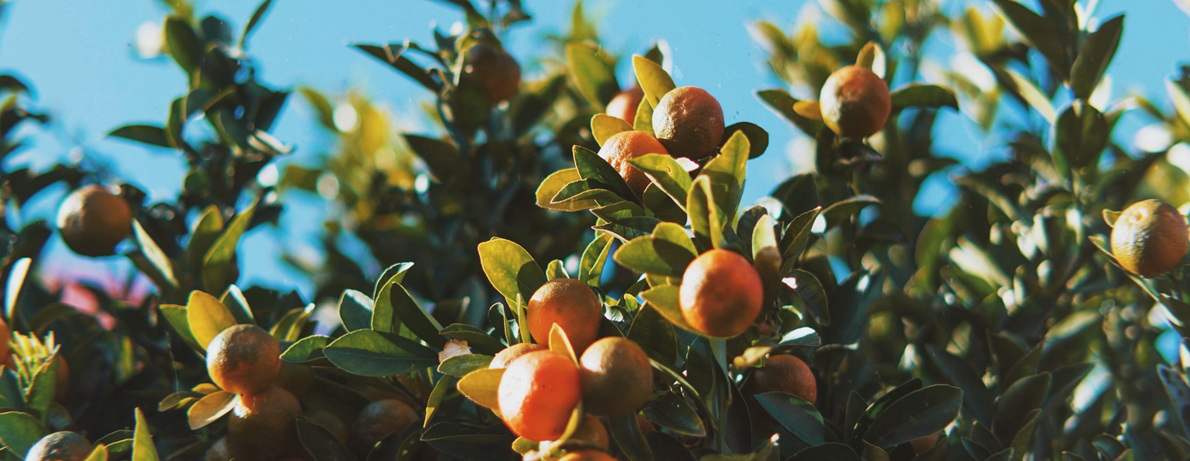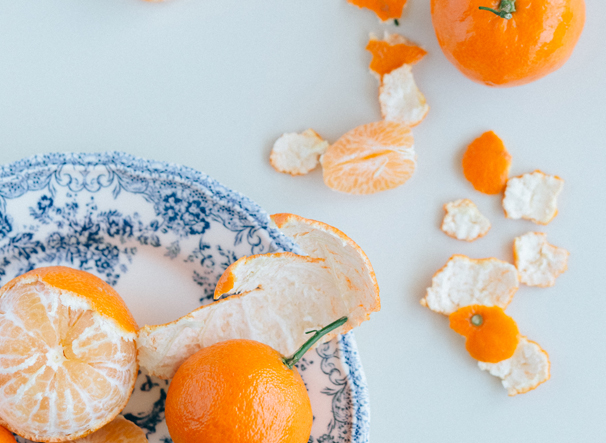Posted by Kelly Jean Reyland
2nd Jun 2023
Growing your own fruit

Growing your own fruit is such a pleasure. The flavour and texture of sun ripened fruit, picked at peak ripeness and eaten within a few days just cannot be beaten. The flavour of supermarket purchased fruit simply does not compare.
Eating home grown fruit brings us back in touch with the seasons too. We are so used to being able to get what we want when we want it, we don’t stop to think about the cost of transporting fruit around the world. We start to think that fruit that was picked unripe and shipped or flown chilled from a distant country, treated with sprays to prevent pests and diseases coming into our country, to be transported around the country in trucks and finally arriving in the supermarket, mealy textured and bland flavoured is the best it can be. No. It’s not! Local fruit in season and picked at its peak and enjoyed quickly is the way nature intended it.
There are plenty of options available for you to grow your own fruit. A small section or even a balcony is not a problem, as long as it gets a good amount of sun. If you live in a part of NZ with a cooler climate, this will restrict your choices but won’t stop you.
What are the options available?
Citrus family – excellent source of fruit, particularly in autumn and winter when options are few. They are excellent options for a pot or in the ground. All of them are frost tender when young but many will harden with age so they can tolerate a reasonable frost. Even so, citrus are generally restricted to glass house growing in the southern regions of NZ. Lemons, mandarins, oranges, limes, grapefruit, tangelo... the list goes on.

Stone fruit – the summer fruit we look forward to with anticipation every year. Peaches, plums, apricots, nectarines, cherries. Many of these need a number of chilling hours below a certain temperature and then a long hot summer but there are options available that have a low chill requirement.
Pip fruit – the fruit bowl stalwarts – Apples and pears, and the less common Quince and Nashi.
Berry fruit – The delicate soft fruits we pay a fortune for every Christmas time and we have frozen in the freezer year-round. The pay back on one of these plants is pretty short once they kick into fruit production. They are fragile to handle and have a short shelf life which explains their hefty price tag. Raspberries, blueberries, blackberries, strawberries, currants, grapes and more.
Sub-tropical fruit – these are definitely restricted by climate, being frost tender but well worth the effort if you can grow them at your place. Passionfruit, Avocado, Tamarillo, Feijoa and more.
You can always try planting in a warm microclimate; on a north facing wall, under the eaves and covered with frost cloth if you are really keen but your winters are colder. Or make use of a glass house if you have one.
Where to plant?
Any fruiting plant needs ideally full day sun. Half day of afternoon sun will do in a worst-case scenario but the number of fruit produced will be reduced.
Soil needs to be well drained with plenty of organic matter such as compost. If you have sandy soil, a generous amount of organic matter mixed into the hole and regular -at least annual- application as a mulch surrounding the tree will help improve the nutrient value within the soil and the water holding capacity.
If you have heavy clay soil or a clay pan layer, the same applies. In this case organic matter helps the tiny clay particles clump together creating more spaces for air and water to move through the soil.

In the case of a clay pan layer, I would definitely recommend planting the tree up on a raised soil mound to help keep the main roots above where water will collect on top of the pan layer. Alternatively, you can look at your options for planting in pots.
In any garden situation – adding organic matter regularly will help improve your soil condition.
You might think in the small sections that are so common these days, there is no room for fruit trees. Think again! You have a few options available to you.
If you have some limited garden beds available to you, there is quite a reasonable range of naturally smaller growing fruit trees that lend themselves to small spaces. Apple Croquella, a naturally topiary shaped tree, Apple Crimson Spire, a columnar growing tree that is very narrow and upright in form or Peach Pix-zee, a dwarf Peach on a 60cm standard trunk are some options for you to look into.
Growing in pots is a great option with plenty of choices for colours, shapes and finishes. Where garden spaces are limited, pots increase where you can grow. There are compact varieties of fruit trees, and some traditional varieties are available grown on dwarf rootstocks which are better suited to container growing. When choosing a pot, bigger is better. A 40 or 50L (big enough to hold a big bag of potting mix) pot is a practical choice avoiding the need to pot on to a bigger size in the near future. During the warmer months you may need to water every day. A smaller pot will dry out faster.
When planting a fruit tree in a pot you can add up to a quarter of the overall amount of compost to the premium potting mix in order to help improve water retention. This is better for the tree and helps save you time.
Root restriction bags are relatively new on the market. Available in different sizes, these specially designed bags create a fibrous root ball rather than the traditional widespread root ball and it helps to dwarf the trees' growth and prevent any damage by roots to buildings or infrastructure. These bags also have the bonus of enabling you to safely dig the tree up and relocate it if you move. Excellent news for renters!

If space is limited, look at your vertical spaces. Is there a sturdy wall or fence in a sunny position that you can espalier a tree against? This art of training the trees to grow horizontally or in a fan shape has been practiced for centuries. It not only looks great but is a very efficient way to grow fruit.
If you are wondering when to plant fruit trees, most garden centres will get their new seasons open ground grown trees in winter when the trees are dormant and can safely be lifted, bagged and transported. Container grown trees are becoming more available in autumn which tend to be smaller and easier to get home. Ideally anytime that isn’t during the heat of summer is fine for planting.
It’s worth doing some research first before you buy a tree or plant. Ensure the intended position gets enough sun, improve the soil if you need to and ensure you have enough space for the tree or plant to grow to its potential size. Some fruit trees need a little more care than others in the form of a spray program to keep pests and diseases under control. If you aren’t prepared to do that, look for varieties of fruit that have a higher natural resistance to pests and diseases.
If you are interested in growing your own fruit, I highly recommend that you go into your local garden centre and have a chat with a knowledgeable staff member who can start you on your journey to delicious, sun-ripened home-grown fruit.
By Kelly Jean Reyland


























